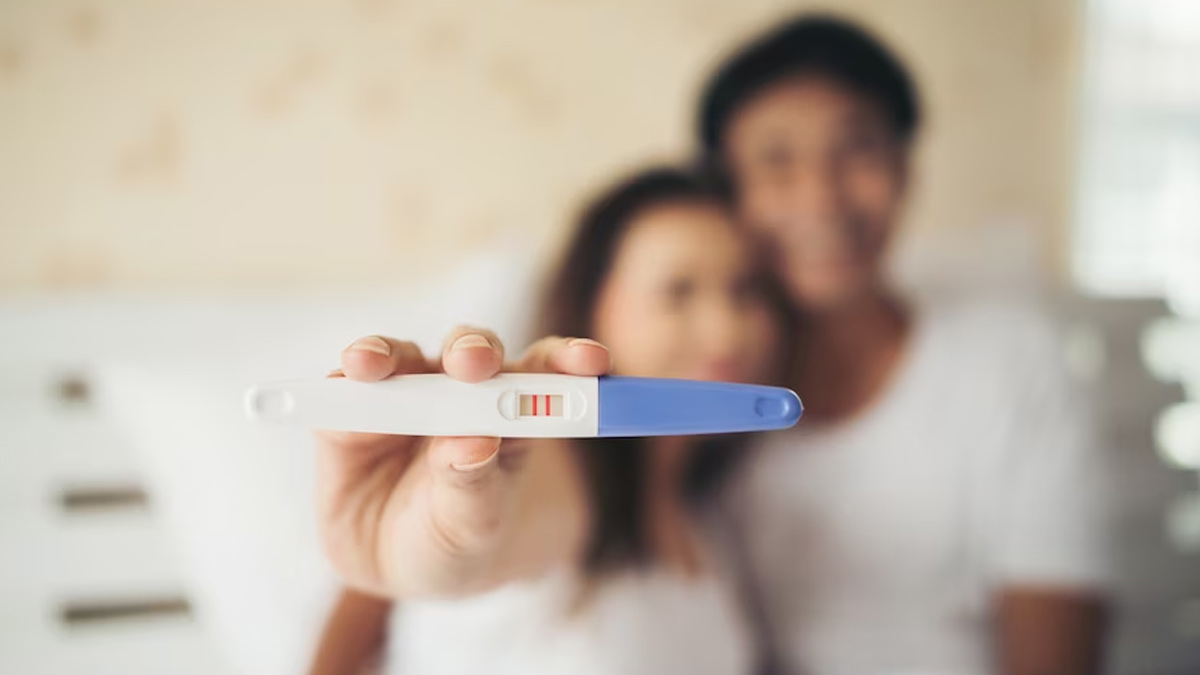
Have you been planning for a baby? Do you think that you might be pregnant? While a visit to the gynaecologist can confirm your doubts, an at-home pregnancy test can give you a faster and more prompt result. Although no homemade or over-the-counter pregnancy tests are 100% accurate, they can be an inexpensive and easily accessible mode of pregnancy testing. If you’re new to this or do not know how to use one, here’s a complete guide to take an accurate pregnancy test at home.
Table of Content:-
When To Take A Pregnancy Test?

According to the UK National Health Services (NHS), most pregnancy tests can be conducted from the first day of a missed period. In case you do not recall when your next period is due, the health body recommends taking the test at least 21 days after you last had unprotected sex.
Also Read: Can Pregnancy Be Confirmed By Checking Pulse? Doctor Answers And Shares Reliable Ways
Some of the signs of pregnancy that should urge you to take a test include:
- Nausea
- Unexplained fatigue
- Tender, swollen breasts
- Food cravings or aversions
- Mood swings
- Frequent urination
- Implantation bleeding
The Accurate Way To Take A Pregnancy Test At Home

Pregnancy tests look for a hormone called human chorionic gonadotropin (hCG), which is produced around 6 days after fertilisation, as per the NHS.
There are two type of at-home pregnancy tests that you can carry out:
Regular/Non-Digital Pregnancy Test
A regular, non-digital pregnancy test kit comes in a box that consists of long test strips. You can pee directly on the tip of the test stick or into a container and then dip the test strip into the urine. If you're pregnant, you're likely to have sufficient levels of hCG in the urine, which reacts with specific antibodies on the test strip, causing a visible line or other indicator to appear, confirming the pregnancy.
Digital Pregnancy Test
Digital pregnancy tests work similarly to non-digital tests that is by detecting the hormone hCG in a woman's urine. The only difference is that digital tests display the results in a digital format on a screen, typically showing "Pregnant" or "Not Pregnant" instead of traditional line indicators. The test has a sensor that measures the level of hCG in the urine and provides a clear, easy-to-read result.
Also Read: Signs Of Pregnancy Other Than A Missed Period
The Risk Of False Negative

A false negative test occurs when you are pregnant but your test results say otherwise. This happens when your hCG levels are too low to catch early on.
According to Mayo Clinic, the earlier you take a home pregnancy test, the more difficult it is for the test to detect hCG levels, hence, urging people to take the test after the first day of a missed period.
Bottomline
If you suspect a pregnancy and wish to acquire quicker results, then opt for home pregnancy tests. These are easy-to-use, cost-effective tests that you can conduct at the comfort of your home. It is hassle-free and can give you accurate results in just a matter of minutes.
Also watch this video
How we keep this article up to date:
We work with experts and keep a close eye on the latest in health and wellness. Whenever there is a new research or helpful information, we update our articles with accurate and useful advice.
Current Version
